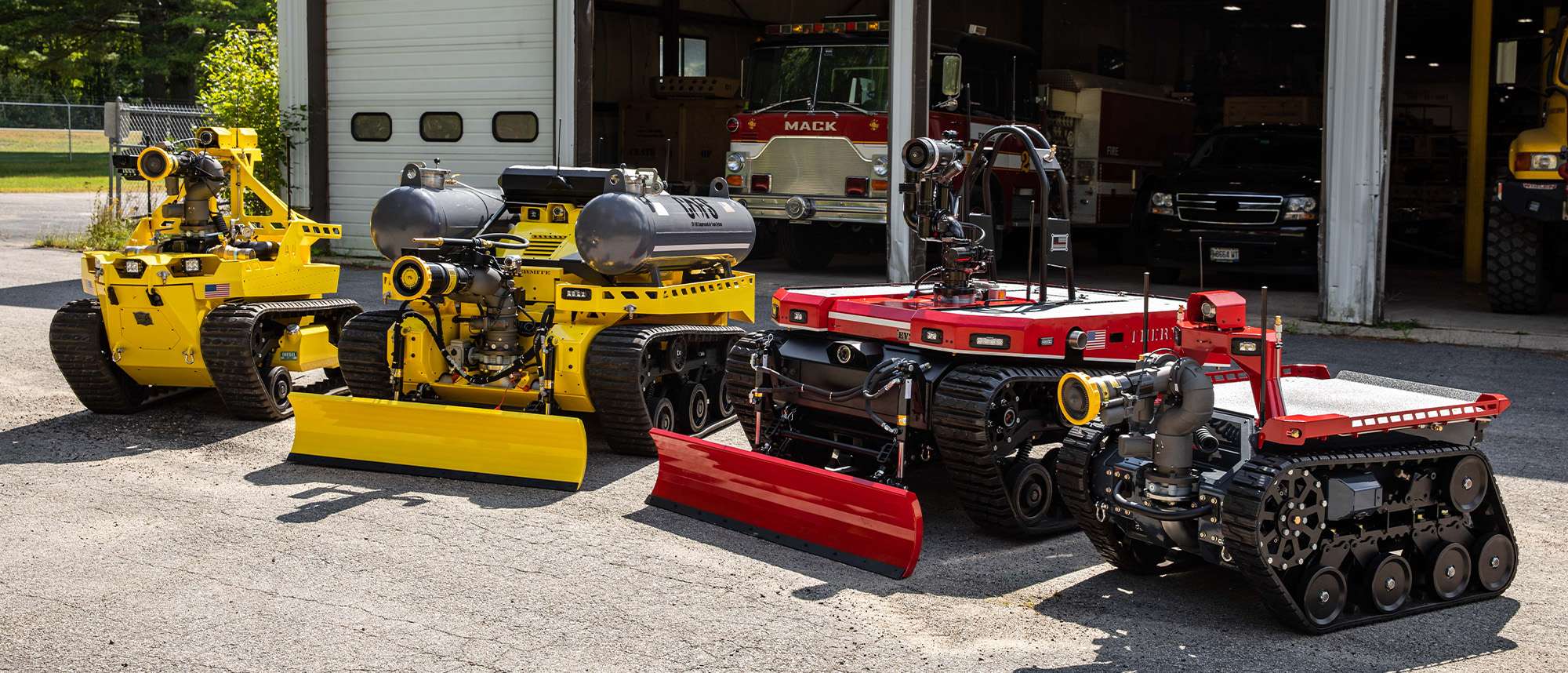
Howe & Howe's Thermite® could have assisted in Elizabeth Park firefighting Operations
On Friday, January 5, more than 100 firefighters were called to respond to a four-alarm fire in New Jersey. A large industrial complex caught fire, setting several businesses and the surrounding landscape ablaze. At the scene, three roofs collapsed, forcing fire trucks to position a mutual aid collapsed zone. Inside the burning structure were toys, leading to many plastics and toxins being released into the air. In response to the toxins, local authorities delayed and canceled school to prevent students from breathing in those fumes. Ultimately, no individuals were in the building when the fire broke out and there have since been no reports of injury, but the sheer size and scale of the incident caused delays in the community’s schedule.
Our Thermite® firefighting robot was made to suppress fires of this scale, while ensuring the safety of first responders. The Thermite family of products was designed to mitigate these life-threatening situations and provide fire suppression, situational awareness and intelligence gathering capabilities to first responders.
To help understand how this tool could be used to help mitigate injuries to all of those involved in fires of this scale, we compiled a list of some of the most common Thermite use cases below:
Surveillance
All our firefighting robots are standardly equipped with front and back facing cameras to help firefighters survey an area without entering a structure. This gives your boots on the ground clear data that can be used to determine whether it is safe to enter a structure, preventing costly injuries that occur on a regular basis. In this case, a robot could have been used to determine where the structure fire was burning at its strongest point and it could safely douse those points with a heavy flow of water, speeding up the fire suppression process.
Load Carrying/Pushing
Thermite robots can tow and push up to 8,000 pounds of weight. Pushing capacity like this could’ve allowed firefighters safe entry into those compromised zones without risking debris falling on those who are trying to put the fire out.
Defensive Posturing
Our robots can run for hours on end, throwing water on a fire without agitating it. This allows firefighters out in the field to attack other jobs, leading to higher degree of success without injury. This also could have aided firefighters in getting to other important tasks at the Elizabeth Park fire while the robot could lead the defensive fire fight.
The work that was done to put out this fire was exceptionally handled from a traditional firefighting perspective. A tool like the Thermite could quickly assist with intense firefighting operations while keeping those on the front lines safe.